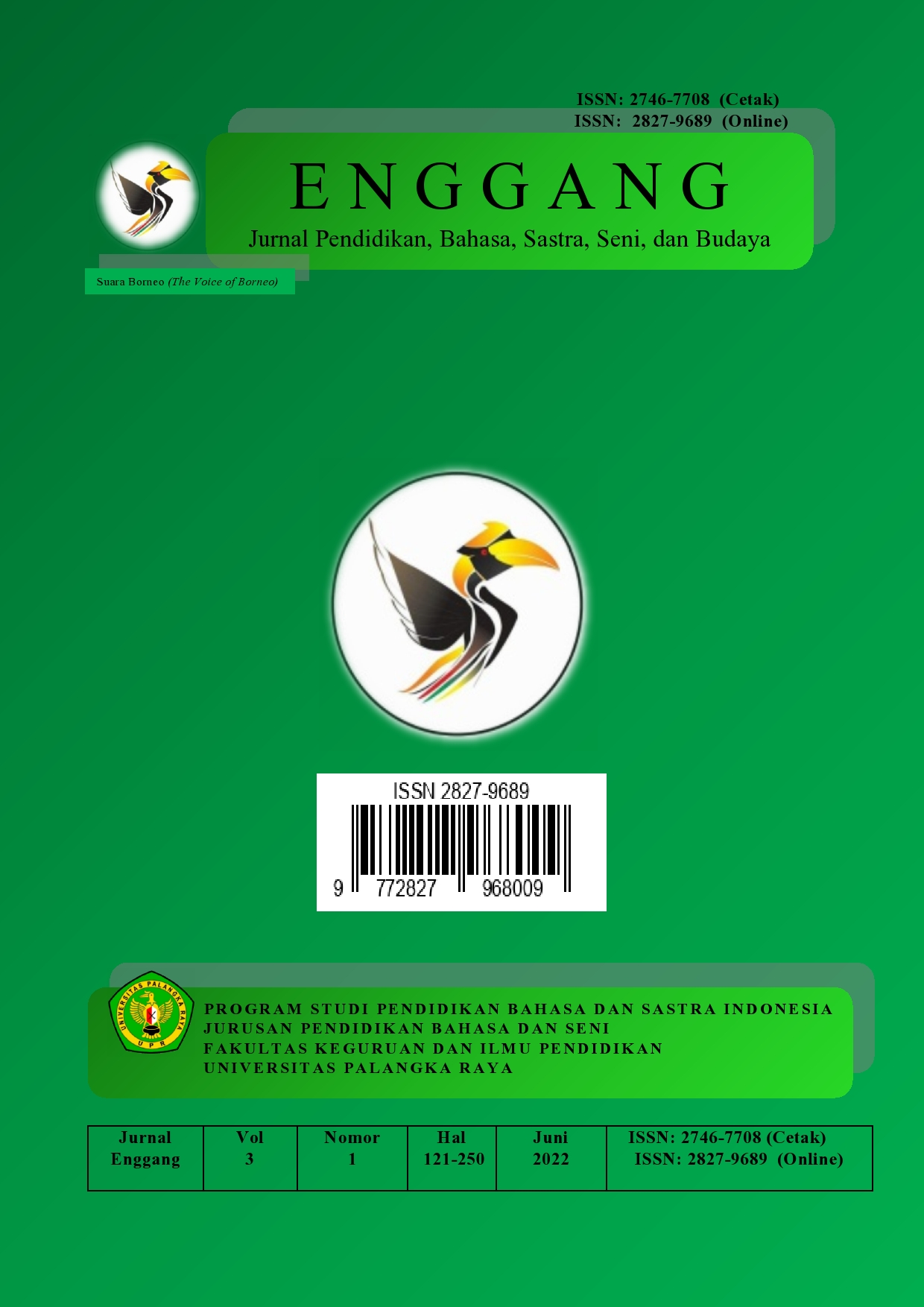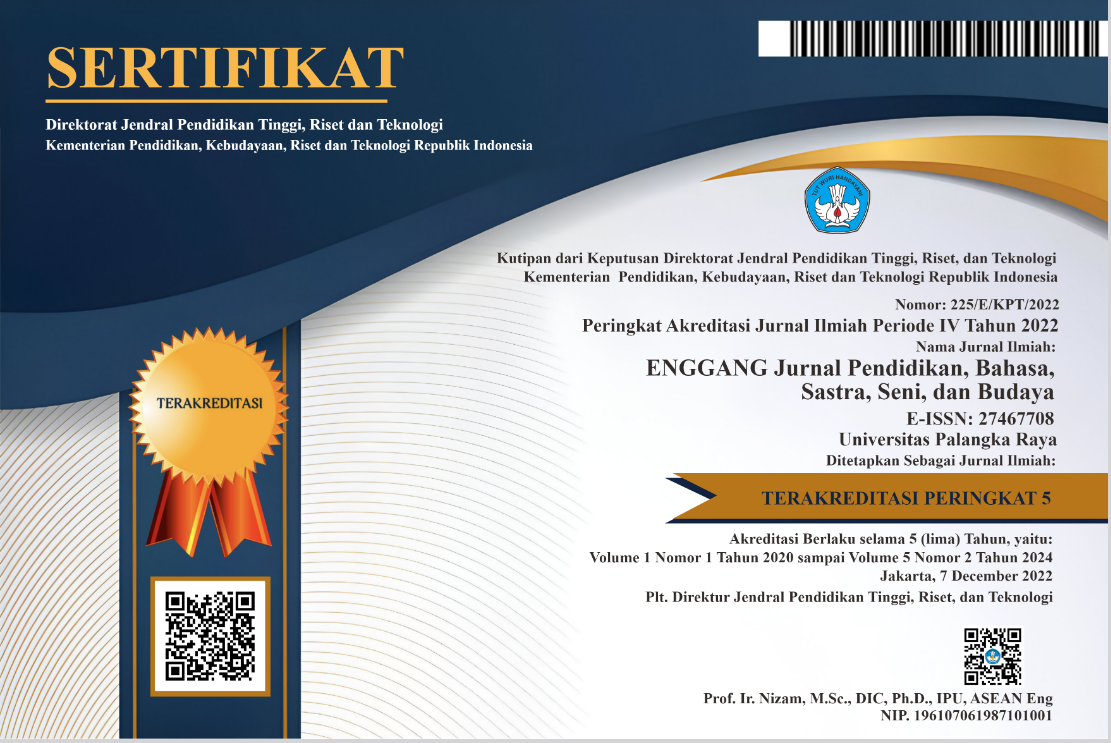The Difference in Perceiving Racism in The Adventures of Huckleberry Finn by Mark Twain
DOI:
https://doi.org/10.37304/enggang.v4i2.15348Keywords:
Racism, White People, Black People, Marginalisation, Colonisation, The Adventures of HuckleberryAbstract
Racism took a different turn in the 16th century, impacting this generation's society. Through racist beliefs and thoughts, people divided society into divisions. This study was based on racism and white people's historical oppression of black people. In this study, we examined two novels that help to analyze racism in society, and the impact of these novels on culture was also addressed. The study described slavery in the 19th century and the colonial times of Nigerian tribes. Mark Twain’s The Adventures of Huckleberry Finn offered an American perspective on racism vs. the African setting of Things Fall Apart. During the 19th century, Nigerian people faced colonisation that impacted the culture and behaviour of indigenous people. In this study, different aspects of racism and the effects of racism on black people were examined. This study also showed that the British invasion forced marginalisation in every element of Igbo society, ranging from traditional values to religious and gender roles; this study aims to discuss the differences in the perspective of racism by analyzing Things Fall Apart and The Adventure of Huckleberry Finn. These two pieces of literature helped to develop better concepts and aspects of racism in the social setting and highlighted the racism between white and black people.
Downloads
References
Ali, S. F. (2017). Decolonizing information narratives: Entangled apocalyptics, algorithmic racism, and the myths of history. Proceedings. https://doi.org/10.3390/is4si-2017-03910
Alkouri, A. M. (2020). The decline of romanticism in Mary Shelley's Frankenstein, Mark Twain's The Adventures of Huckleberry Finn, and Edgar Allen Poe's The Black Cat. Advances in Social Sciences Research Journal, 7(12), 38–42. https://doi.org/10.14738/assrj.712.9347
Anderson, E. (2008). A window to Jim’s humanity: The dialectic between Huck and Jim in Mark Twain’s Adventures of Huckleberry Finn [Master’s thesis, Indiana University].
Babaii, E., & Rashed, M. (2017). Representation of social actors in Chinua Achebe’s novel “Things Fall Apart” and its two Persian translations. Translation & Interpreting, 9(2). https://doi.org/10.12807/ti.109202.2017.a10
Back, L., & Solomos, J. (2009). Introduction: Theories of race and racism: Genesis, development, and contemporary trends. In Theories of Race and Racism (2nd ed., p. 31). Routledge.
Barad, K. (2017). Troubling time/s and ecologies of nothingness: Re-turning, re-membering, and facing the incalculable. New Formations, 2017(92). https://doi.org/10.3898/NEWF:92.05.2017
Birch, A. W. (2020). The presentation of race at Mark Twain historical sites in Hannibal, Missouri [Graduate research paper, University of Northern Iowa]. https://scholarworks.uni.edu/grp/1348
Blumer, H. (1955). Reflections on theory of race relations. University of Hawaii Press EBooks, 1–22. https://doi.org/10.1515/9780824884772-002
Bowser, B. P. (2017). Racism: Origin and theory. Journal of Black Studies, 48(6), 572–590. https://doi.org/10.1177/0021934717702135
Brown, N. E. (2017). Black women’s pathways to the statehouse: The impact of race/gender identities. In Black Women in Politics. https://doi.org/10.4324/9781351313681-6
Bullard, R. D. (1991). Dumping in Dixie: Race, class, and environmental quality. Contemporary Sociology, 20(6), 911. https://doi.org/10.2307/2076191












